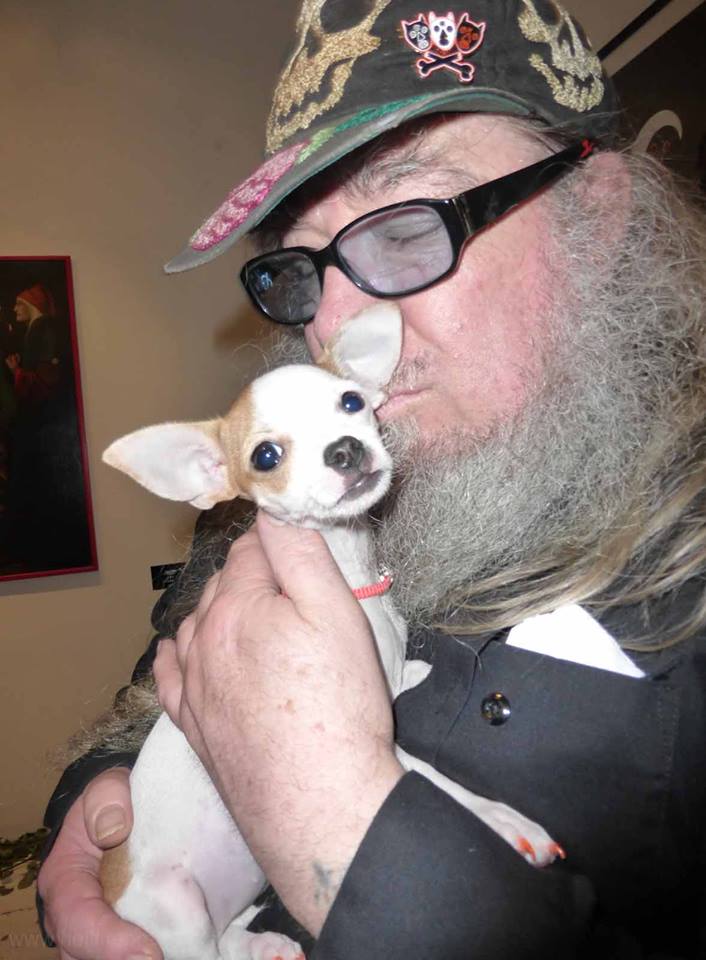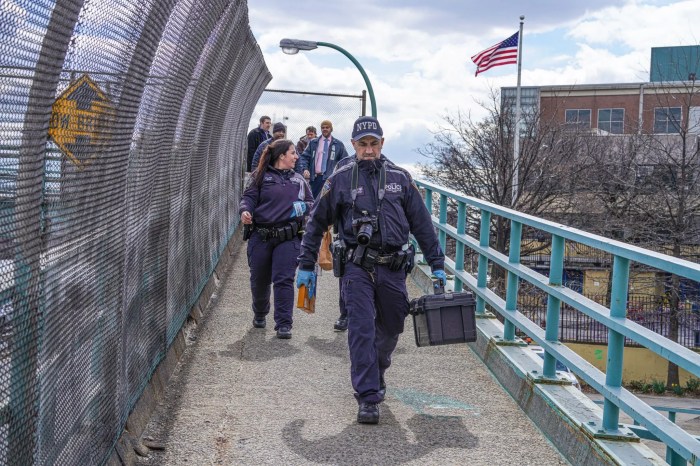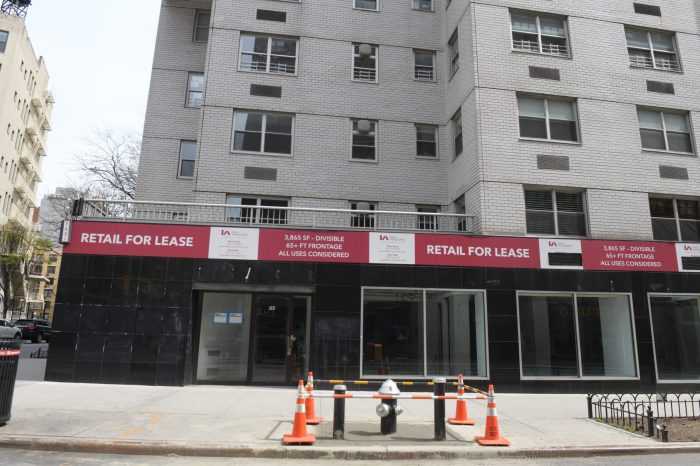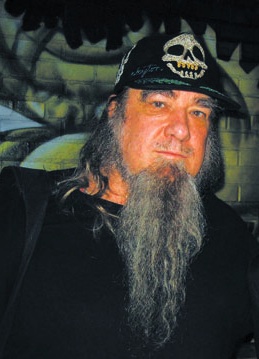
BY LINCOLN ANDERSON | Clayton Patterson is busily, a bit frantically, pulling together the Second Annual Acker Awards. Set for the evening of Sun., June 1, at Theatre 80 St. Mark’s, the Ackers will celebrate the unique contributions of 40 talented members of the Downtown avant-garde community.
Patterson organizes the event, which also has a San Francisco version run by writer Alan Kaufman. In a special touch, each honoree will get a decorated box containing 40 items, one item representing each honoree.
“It’s like a chocolate box,” Patterson said.
A little more than a month ago, an article on the front page of The New York Times Sunday Metropolitan section — in what came as a bombshell to many — announced that the Lower East Side documentarian would be leaving the hood for good to live in Austria. Headlined “Last Bohemian Turns Out the Lights,” it detailed his disillusionment with the city he once knew.
“There’s nothing left for me here,” Patterson, 65, was quoted saying. “The energy is gone. My community is gone. I’m getting out. But the sad fact is: I didn’t really leave the Lower East Side. It left me.”
Last week, Patterson and his wife and fellow artist, Elsa Rensaa, held a closing party for a monthlong pop-up exhibit of their work at a Meatpacking District gallery. Symbolizing Patterson’s cynicism about the city’s gentrification juggernaut, it was titled “The $16 Burger Show.”
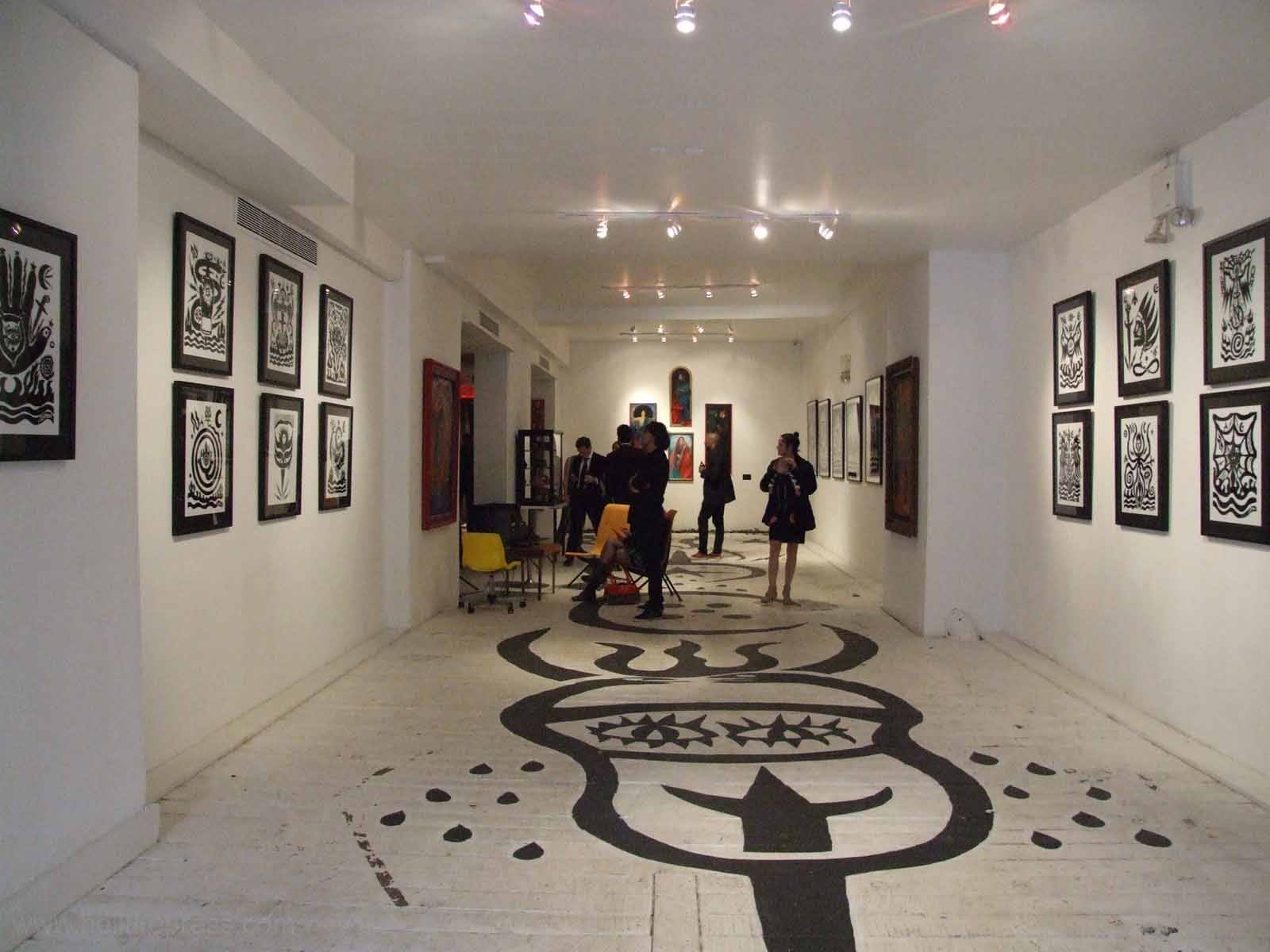
It was just a bit north of there, in Chelsea, that Patterson had the overpriced hamburger that was the show’s namesake.
“And it wasn’t even good,” he noted.
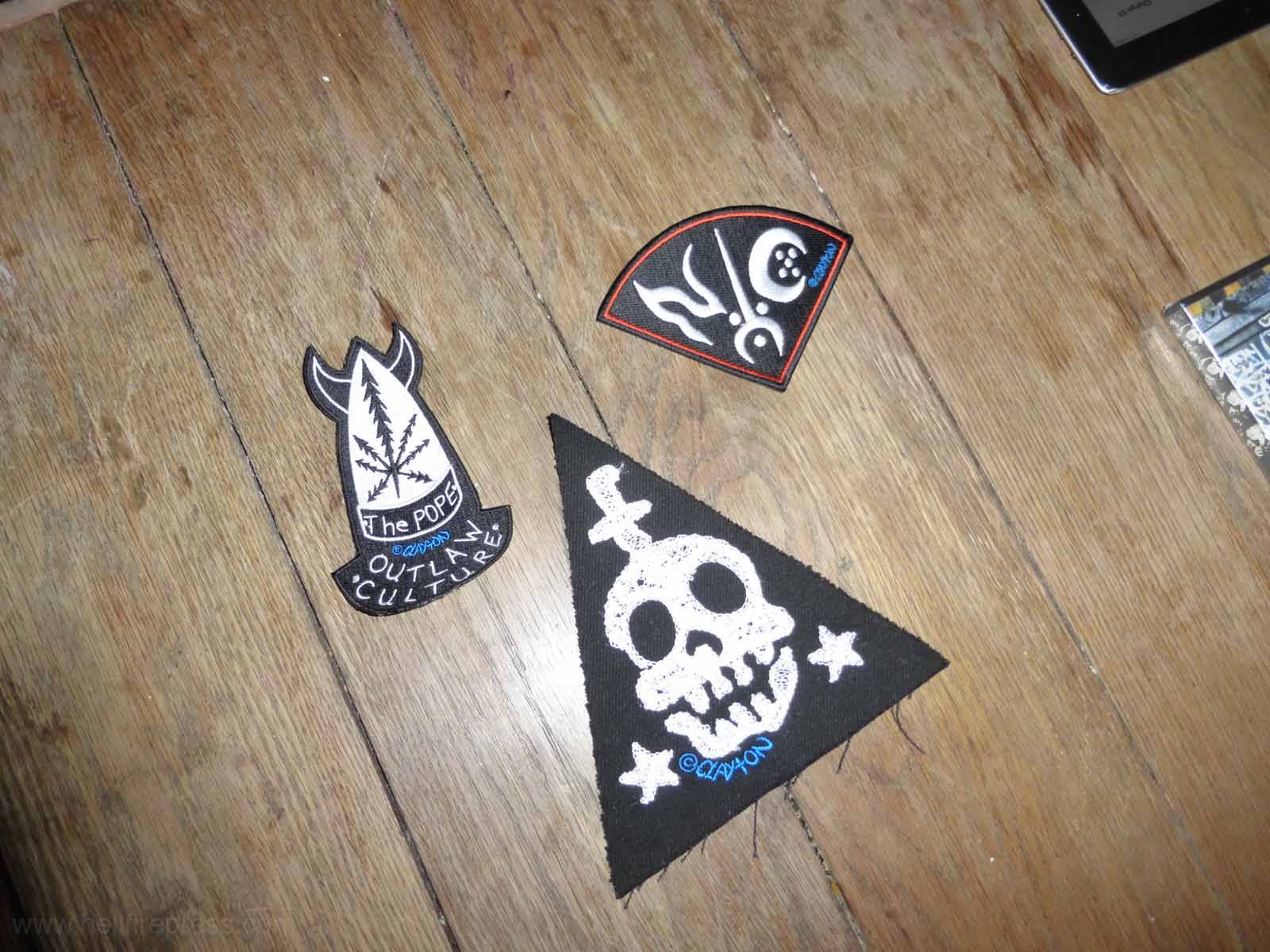
He and Rensaa haven’t said exactly when they’ll make the big move — a lot needs to be done before they go — but he said they’re definitely doing it. It sounds, though, like it won’t be before the fall.
“I’m not a 20-year-old kid,” he said. “I have a lot of stuff.”
Part of the reason for the relocation — downplayed somewhat in the Times article — was a frightening incident about half year ago when Rensaa was assaulted by intruders at their Essex St. home.
Patterson was away, in Austria, at Wildstyle and Tattoo Messe — a touring riot of sideshow acts and body art — at the time.
Basically, Rensaa told The Villager, she was standing in her doorway giving their empty bottles to some “Chinese bottle people” who regularly come around for the recyclables.
“A few bottle people were there,” Rensaa said. “I’ve given them quite a bit of bottles.”
Somehow, some other individuals slipped inside the door and got behind her. They came up behind her and tried to grab her purse. They pushed her from behind and she fell on top of her handbag.
“They were pulling my hair to get the purse,” she said. But she hung on to it.
She never viewed their faces.
“All I saw was their shoes,” she said. “They had on black shiny shoes.”
She said her scalp hurt badly for sometime afterward due to their violently yanking on her hair to try to get her to give up the bag. The Villager happened to call Rensaa shortly after the incident and she sounded badly shaken, and down on New York.
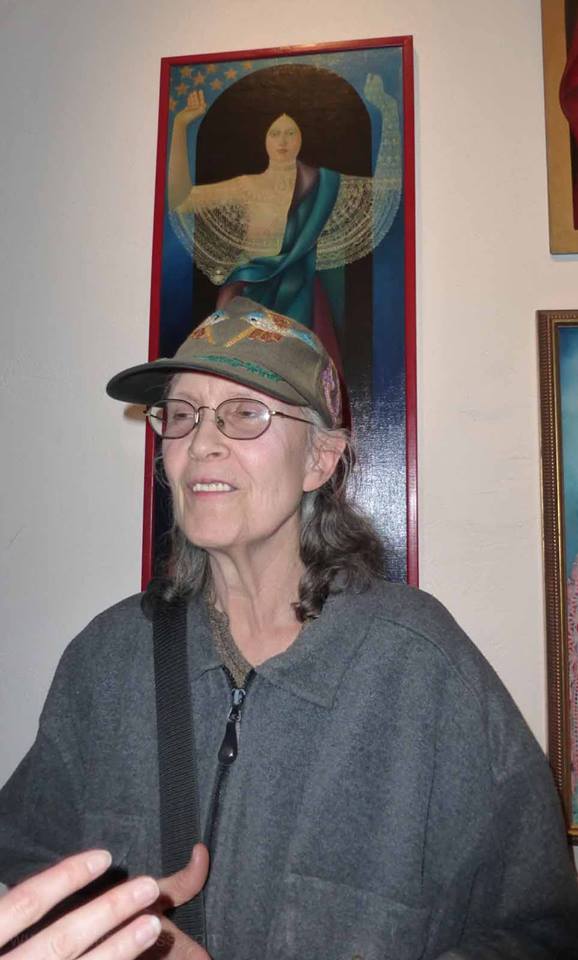
Patterson admitted to The Villager that part of the reason for the move is his concern over what happened. He has to travel from time to time — he’s big in Europe — yet he wants to be there for Rensaa.
As for the Times reporting Rensaa was “not harmed,” Patterson indignantly told The Villager, “Not harmed? They pulled her hair!”
He said he just wants to enjoy time together with his wife, and that the Austrian countryside will definitely be a change of pace from the frenetic L.E.S.
As for her husband getting European citizenship, Rensaa said, it’s not an issue since she was born in Norway and thus is a European Union citizen.
Other Downtown artists and activists wished Patterson well, while offering their own take on whether the Lower East Side is truly over.
“Clayton’s been trying to make that stand for 10 years and he’s gotten tired,” said performance artist Penny Arcade. “But with all due respect, to say, ‘Clayton, the last bohemian’ — he’s 25 years younger than Jonas Mekas and Judith Malina.”
Plus, Arcade said, “Downtown has always been a mythological space. Downtown New York belongs to everyone all over the world.”
She recalled what she used to tell people when she lived in the dangerous, pre-gentrification Lower East Side in the early 1980s.
“I used to say, ‘There’s Soho, there’s Noho — and I live in Oh-oh.’ ”
But those edgy days are gone.
“People used to move here because it was a place that generated culture,” Arcade said, rattling off names of artistic luminaries like William Burroughs, Allen Ginsberg, Lou Reed. “It wasn’t a consumerist society. Now the people who are moving here are interested in ‘Sex and the City,’ ‘Friends’ and ‘Girls,’ those really trite shows.”
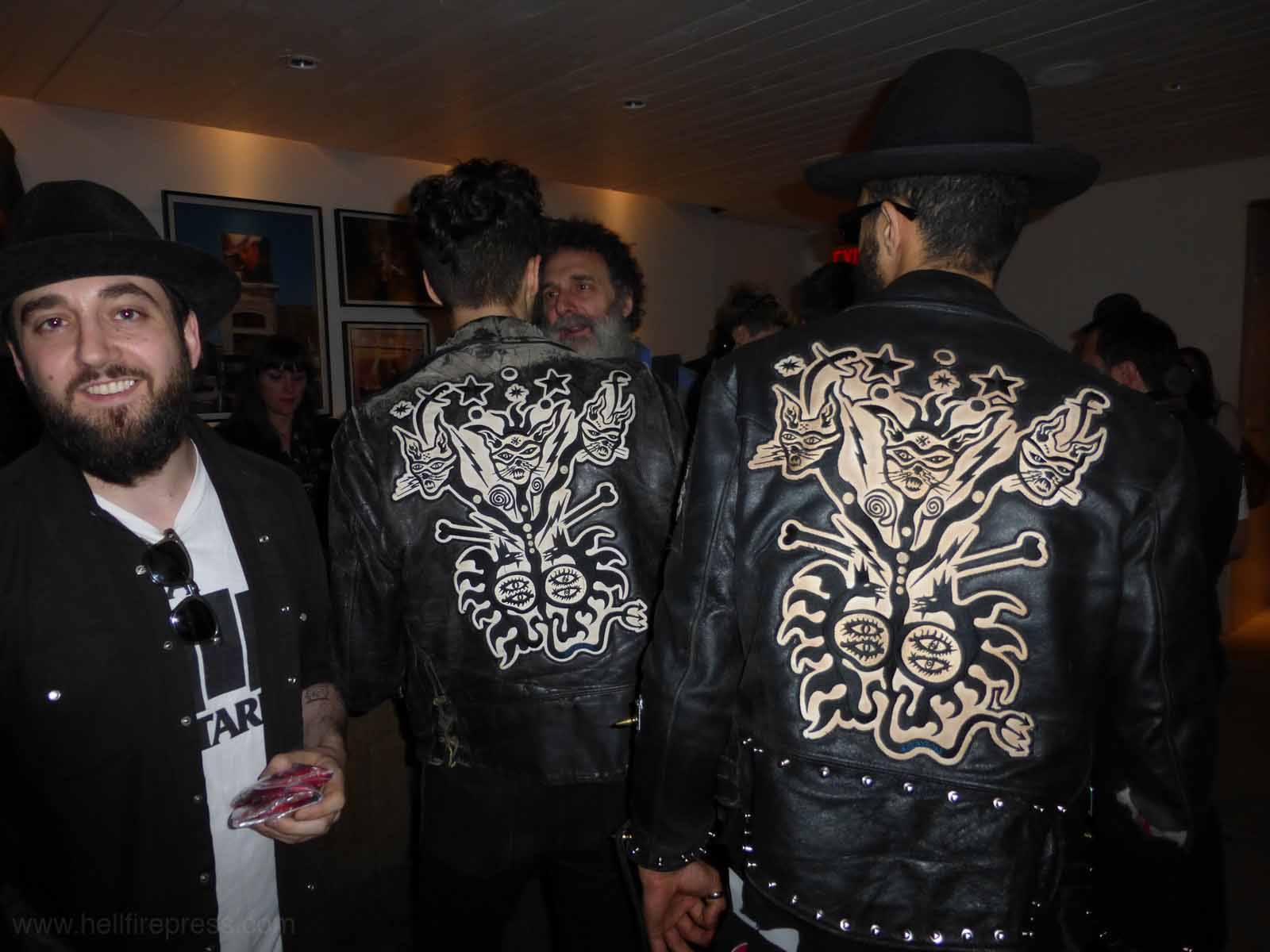
Patterson’s early claim to fame was for having made one of the two major videotapes of the Tompkins Square Riot of 1988. Paul Garrin made the other. This was before the era when handheld video cameras — much less smartphones with cameras — were widely available.
“I love Clayton,” said Garrin. “I’ll miss him. If he’s not happy here, maybe he’ll be happy in Austria. If that’s where his heart is taking him, he should retire gracefully. I hope he comes to visit.
“It was awesome that he stood up for me in print in The Villager,” Garrin added, referring to an article Patterson wrote about Garrin’s fight to get New York City and ICANN — the Internet-governing body — to recognize his ownership claim of .nyc.
In a different spin than Arcade, Garrin — an artist turned connectivity guru — said bohemia doesn’t have to be defined by artists, but rather can be created by community activists struggling on issues like housing and tenants’ rights.
“For me, what Clayton said is true, it’s right. But it’s not necessarily over,” Garrin said. “Lower East Side and bohemia is not strictly defined by the historical influx of artists, because there’s still a vibrant community that’s not defined by artists that’s still strong — like Good Old Lower East Side, Two Bridges [Neighborhood Council] and Cooper Square Committee. These people are fighting for the Lower East Side in a way that’s real. It’s not just about whether artists are here — it’s about whether it’s affordable for everybody: affordable housing, healthcare, opportunity equality.
“There’s a whole generation of kids living in the projects that might not be recognized as artists,” Garrin said. “These kids might be future scientists, engineers. I don’t say it’s dead. One generation is handing off to the next one.”
Also, Garrin noted, he shops for food very affordably in Chinatown markets, so he doesn’t face the “$16 burger” dilemma.
“For $16, I can eat for a couple of days,” he said. “You can be strategic in your shopping.” Plus, he added, “I haven’t eaten a burger in 40 years, since I was 18.”
But Patterson stressed it’s not about artists, but about what’s happening to the city: Basically, no one can live here anymore except the wealthy.
“Forget the artists!” he said. “Look what happened with Atlantic Yards in Brooklyn. They just took that land. Look at what happened with Pearl Paint. That was much more than just an art store. … Money scares me much more than drugs.”
Patterson emphasized that he sincerely hopes his legacy won’t only be his riots tape, because he’s done much more than just that. He’s published a number of thick books with contributions from scores of local writers, on subjects from Lower East Side radical resistance to Jewish culture and beyond. And he’s planning still more new books — including one on the history of local gangs.
The work never ends for Patterson. But first — there are the Ackers.
